For a motorcycle enthusiast, one picture of a rider speeding down a scenic highway or exploring the wilderness with his bike and gear covered in mud is all the inspiration he needs to overcome his fear and follow his passion for riding. An adrenaline-fueled experience, motorcycle riding is not only about adventure, freedom, and amusement. Quite the contrary, motorcycle riding is a challenging pursuit, demanding dedication, hours of practice, and also a pinch of courage. The journey is long and certainly not for the faint-hearted. Riders who have mastered the skills of motorcycle touring, the art of maintaining forward momentum in no-traction scenarios, and managed to traverse the most impossible terrains have been in your position once, but by acquiring proper training, following road guidelines, and learning techniques of handling a motorcycle, they have managed to summit all challenges of motorcycling, adopting it as a lifestyle.
When it comes to familiarizing oneself with the process of learning how to ride or being able to ride a motorcycle on streets legally, a list of steps is provided that we must complete to reach the end goal - obtaining a valid motorcycle endorsement/license. It is expected that the rider must fulfill these steps in the following order, except for some states due to their different laws:
- Passing a written test
- Receiving a learner’s permit
- Preparing for the road test
- Passing the demonstration exam
- Acquiring the license
- Purchasing the motorcycle and an insurance policy
- Registering the motorcycle for a license plate
- Riding on the public roads
Most of the time, motorcycle license aspirants fail to pass the road test. On the other hand, some novice riders still struggle to improve their riding skills, despite completing all the above-mentioned steps successfully and obtaining their motorcycle license, primarily because they do not prioritize practice, purchase an unsuitable bike, or struggle to develop basic road sense. This article aims to provide some essential tips to help riders survive their first month of riding, during both the pre-license and post-license phases, helping them hone their riding skills and achieve their riding goals.
Table of Content
1. Tips for First Month of Riding a Motorcycle - Pre-License Phase
Passing the written test and getting a learner’s permit is an achievement unlocked in the world of motorcycles. After this, you can borrow a motorcycle from your family member or a friend to practice riding and become eligible for the road test and eventually a motorcycle endorsement. In most states of America, learner’s permits are valid for up to six months, and riders are usually required to practice during this entire time before they can book a road test. Here are some tips for you to follow to make the most of your first month of pre-license riding.
1.1 Invest in High-Quality Safety Gear

Before you hop on the borrowed motorcycle, ensure you put on high-quality riding gear that fits you snugly, particularly around the collar. When buying a motorcycle riding suit, be sure to consider weather conditions. In summer, your riding gear should be airy and breathable, allowing you to practice for hours without feeling stifled or uncomfortable. Putting on comfortable weather-appropriate riding gear is crucial to maintaining focus on learning the riding technique. An ill-fitting riding gear that makes you too hot in the summer and fails to provide necessary insulation in winter will prove to be a huge hindrance and distraction.
Investing in a DOT-approved motorcycle helmet is necessary for beginners even if there are no helmet laws in your state. As a beginner, most motorcyclists struggle to maintain balance and to keep the bike upright. In case your bike tips over due to a minor collision or a no-contact accident, having reliable head protection can keep you from getting concussions and other head injuries. Additionally, look for a lightweight and aerodynamic, full-face helmet for protection against gusty winds and buffeting. Since motorcycle helmets last for years if maintained properly, you want to make sure that you invest in a helmet that you can use for post-license riding and will be practical in a wide range of riding conditions. Also, learn how to clean the helmet visor properly for improved visibility on the road.
Also Read: When is a Motorcycle Helmet Too Old?
Motorcycle gloves are another essential piece of motorcycle gear that keeps your hands from going numb due to cold or vibrations, so be sure you invest in thick, vibration-mitigating padded gloves for maximum comfort. During the first month of pre-license riding, consider using back, elbow, and knee protectors to reduce impact in the event of a fall.
When riding on the streets, you may encounter unexpected rain that will leave you soaked and shivering. To prevent this, be sure that your riding gear is waterproof and also windproof with a non-chafing adjustable high collar that will protect your neck and prevent water from seeping in. Also, ensure you add a warm neck gaiter/neck tube to your winter motorcycle riding gear. For winter riding gear, avoid wearing your riding gloves over the cuffs of your jacket. Waterproof jacket cuffs covering the gloves prevent rainwater from seeping inside, keeping you dry and comfortable.
Since motorcycle riding gear is essential for both beginners and experienced riders, be sure to follow these tips even after you have acquired years of riding experience to ensure a safe riding experience.
Also Read: Practical Features of Motorcycle Adventure Gear for All Weather Conditions
1.2 Get a Motorcycle Training Course

Most states allow riders to learn how to ride a motorcycle on their own with no mandatory requirements regarding supervised training from a riding school. However, this is not recommended unless you have a highly experienced rider to teach you about motorcycle controls, handling, braking, maneuvers, and other skills required to pass the road test.
Motorcycle riding schools have systemized curriculums, and they teach different riding skills step-by-step, allowing the rider to gain more confidence with each step. Moreover, many training courses teach riders how to inspect their motorcycle for visible mechanical issues, help them develop a road sense through specific instructions, and also educate them about different safety precautions to make motorcycling less dangerous for absolute beginners. The training schools also provide motorcycles on which students can practice essential riding skills. Another benefit of taking riding classes is that they help riders become familiar with a particular motorcycle, helping them with their first motorcycle purchase decision. Some states provide road test waivers to riders who complete a motorcycle safety course, so try not to rule out the option of getting riding classes just because they are expensive.
Also Read: 8 Reasons You Need To Go To A Motorcycle Riding School
1.3 Read the Motorcycle Handbook
Throughout the first month of riding, be sure to regularly read a motorcycle manual, highway code, or police riding manual to memorize the necessary information and apply it when practicing riding. These manuals have all the information about motorcycle operation, safety tips, riding laws, and road signs that will help develop a stronger road sense, make you more aware of road hazards, improve your accident avoidance, and make you a better rider in general.
1.4 Observe and Ask for Demonstrations
During your first month of riding, try to expose yourself to different riding settings and observe how other motorcyclists operate their bikes. Moreover, if there is an experienced motorcycle rider in your family or friend circle, ask for demonstrations. Most riders are visual learners and can improve their riding in the first month of riding, simply by observing others perform various maneuvers. In case you don’t know anyone who can offer demonstrations, watch different YouTube videos and try to incorporate the skills taught in your riding practice sessions.
1.5 Practice Extensively
Feeling like you’re not making progress? The key is to practice continuously during your first month of riding without having any expectations. The more you practice, the better you’ll get at handling, steering, parking, and controlling the motorcycle. It usually takes three to six months of consistent practice before beginners start seeing improvement in their riding abilities. So don’t get demotivated by setting unrealistic expectations and overambitious goals.
1.6 Research Beginner-Friendly Motorcycles

Many riders don’t have anyone to borrow a motorcycle from, and to remain consistent with their riding practice, they must purchase a motorcycle in the first month of riding after getting the license. There are many types of motorcycles that beginners can buy, such as cruisers, street and sports bikes , naked sports bikes, lightweight adventure motorcycles , and dual sports bikes . To save time, it is best to start researching different motorcycle genres, understanding their specifications, and learning about the operations and pros and cons of different types of motorcycles. As a novice rider, avoid purchasing a motorcycle based solely on its aesthetic quality. The main purpose of buying a motorcycle at this stage is to hone riding capabilities, so look for a bike that is easy to handle, offers manageable power, provides a greater degree of stability, and is equipped with a dependable braking setup with a confidence-inspiring stopping power.
Also Read: 10 Best Harleys for Beginners
2. Tips for First Month of Riding a Motorcycle - Post-License Phase

With your motorcycle endorsement in your hand, nothing can stop you from stepping up and purchasing your motorcycle, mastering the riding skills you have acquired during your pre-license riding phase, and enjoying the freedom of open roads. However, the first month of riding after obtaining a license comes with its own set of requirements. During the post-license phase, factors like traffic, your motorcycle, weather, and riding conditions will test your riding acumen, and you must heed these demands to become a refined rider. Here are some tips to help you get through your first month of motorcycle riding.
2.1 Purchase the Right Motorcycle

By researching different types of beginner-friendly motorcycles beforehand, purchasing the right motorcycle becomes a seamless process after licensing because you have had enough time to contemplate your purchase decision. When purchasing a used motorcycle, be sure to prioritize a bike’s condition over its price because a cheap, ill-maintained motorcycle will negatively impact your riding practice and will cost you the same as a well-maintained or a new motorcycle in terms of accrued repair costs and expensive replacements.
Also Read: Five Best Used Cruisers Under $3,000
2.2 Start Small and Slow
The motorcycle you have purchased will be different from the bike you have been practicing riding on unless you purchase the same model. Therefore, it will some time before you get accustomed to the operations of the new bike. It is recommended that you adopt a slow approach with your new bike and avoid riding it in traffic-dense areas during the first month. Limit the distance to the nearest grocery store or the bank to see how it handles, test its braking, become more fluent with its gear shifts, and gauge its engine power. Once your bike becomes a predictable and reliable machine, start riding it on longer distances or highways. If your workplace is close to your house, you can use your new bike as a commuter in the first month of riding to develop confidence.
2.3 Practice Slow-Speed Maneuvers

One of the biggest challenges riders face in their first month of riding is how to perform slow-speed maneuvers in slow-moving traffic. Therefore, it is crucial to learn how to use the throttle, clutch, and brake to keep the motorcycle stable and maintain forward momentum in these congested riding conditions. Focus on steering the motorcycle in the direction you want it to move instead of diverting your attention to vehicles you want to avoid. Practice slow-speed maneuvers and U-turns in an empty parking lot or a deserted street and try to bring your motorcycle to a near halt without putting your feet on the ground.
2.4 Read Motorcycle Owner’s Manual

Make sure you read the motorcycle owner’s manual to learn about your bike’s maintenance requirements and how to perform the essential safety checks yourself before every ride. A beginner-friendly motorcycle does not feature complex suspension and braking systems, high-end technology, or large engines with complicated designs, making it easier for riders to inspect the workings of the motorcycle and ensure that all of the bike’s functions are performing at their best. The main safety checks that you need to learn how to perform include:
- Checking tire pressure
- Lubricating chain drive (if required)
- Adjusting mirror position
- Checking fluid levels and inspecting for leaks (brake fluid, engine oil, coolant, fuel, transmission fluid, etc)
- Checking horn and lights
- Inspecting the condition of the suspension
- Checking the condition of the kickstand spring
- Checking the operation of the clutch lever, throttle, and brake levers
2.5 Install Practical Custom Accessories

During the first month of riding, opt for practical custom accessories only and refrain from splurging on fancy paint jobs, electrical accessories, speakers, blinking brake lights, etc. The most practical aftermarket motorcycle part for your first month of riding is crash bars . Optionally, you can add a comfortable seat that is both stylish and supportive, use handlebar risers to adjust the handlebar height or opt for a handlebar replacement if the shape and length of stock bars feel uncomfortable. Additionally, you can mount a small luggage bag , such as a tank bag or a handlebar bag , which does not add extra weight to the bike or impact its stability.
2.6 Be Seen
Making oneself more visible on the road is an important skill that riders should learn during the first month of riding. Now you don’t need to wear helmets in loud flashy colors to achieve this. All you need to do is look out for vehicles pulling away from junctions or curbs. Being prepared for quick maneuvers to protect yourself from a collision is a major and one of the most important skills that you should work on in the first month of riding. A small horn in these situations can help drivers recognize your presence. Also, not being able to see the mirrors of the other vehicle is all the warning you need not to risk it.
2.7 Practice Controlled Front Braking

Pay special attention to practicing braking because the action requires quick reflexes and composure during unforeseen situations. In their first month of riding, most riders panic when they see a vehicle approaching fast, resorting to hard front braking, an action that locks the rear wheel and leads to a loss of control, skidding, and major crashes. In an empty area, practice to apply the front brake gently first and then pull it hard to bring your motorcycle to a complete stop.
2.8 Take Advanced Riding Classes
Advanced riding classes can help you become more proficient in different aspects of motorcycle operation and develop road intelligence. Moreover, advanced motorcycle riding classes connect you with a community of riders who share your passion for riding. By finding a support system in the first month of post-license riding, you will achieve your riding goals faster than if you practice alone.
Additionally, in advanced classes, you will have access to certified instructors who are taking continued training themselves. Their instructions and assessment of your riding will help you understand your strengths and weaknesses in the first month of riding, allowing you to learn in a controlled environment instead of through trial and error which can be dangerous on the road. Another advantage of advanced riding classes is that they teach you how to adapt to changing road conditions while riding.
Moreover, if you feel that you have already become a confident rider and would like to experience a different type of riding, such as track racing, dirt bike riding, or adventure riding, it is best to join a class teaching skills required to traverse different terrain and navigate obstacles on pavement or gravel.
Also Read: How to Ride Your Motorcycle over the Stuff on the Road
3. Last Words
The first month of riding is equally important and challenging because most riders need to overcome their fear of traffic and the intimidation of riding a new, unfamiliar motorcycle during this period. The tips mentioned in this article will help you focus on the things that matter more during the early phase of motorcycling. The key to becoming a refined rider is to spend more time with your bike and develop a certain sense of comfort riding it. To practice difficult maneuvers, stick to parking lots or deserted streets so you don’t have to worry about getting hit, damaging others’ property, or causing injury. Make sure that you are well informed about all the traffic laws and dedicate time to understanding traffic flow, riding conditions, and the maneuvers or skills required to safely navigate different riding settings.
Also Read: 10 Tips for Riding a Motorcycle in the Rain
12 Best Off-Road Motorcycle Riding Tips for Beginners

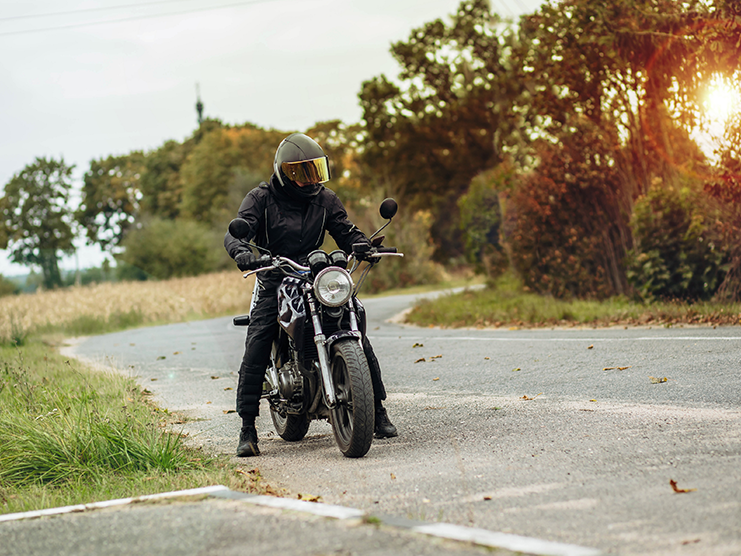
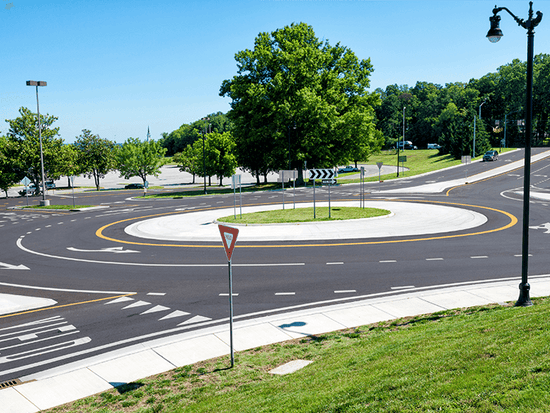
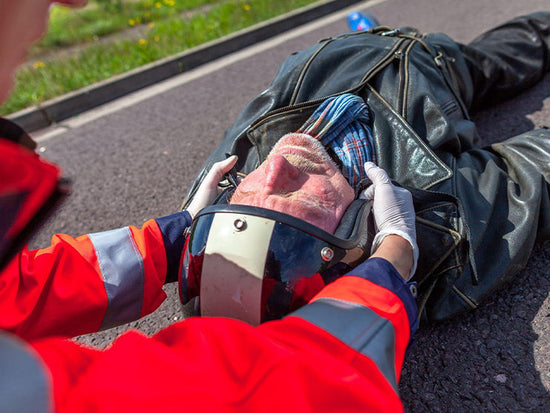

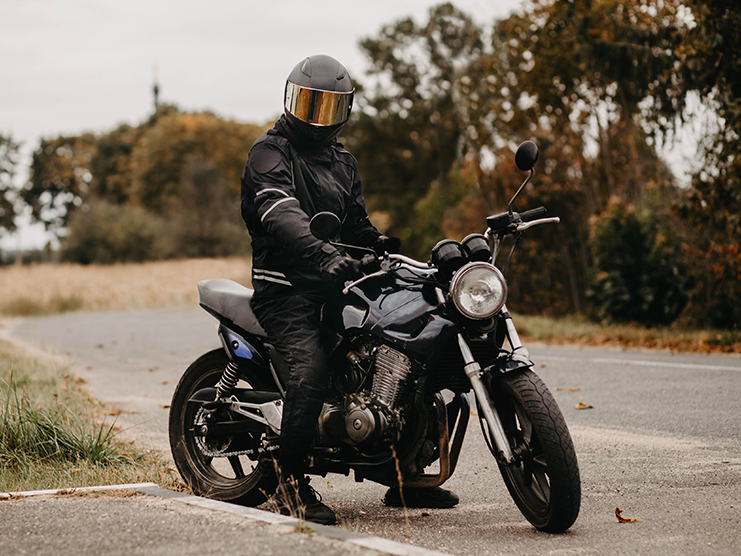
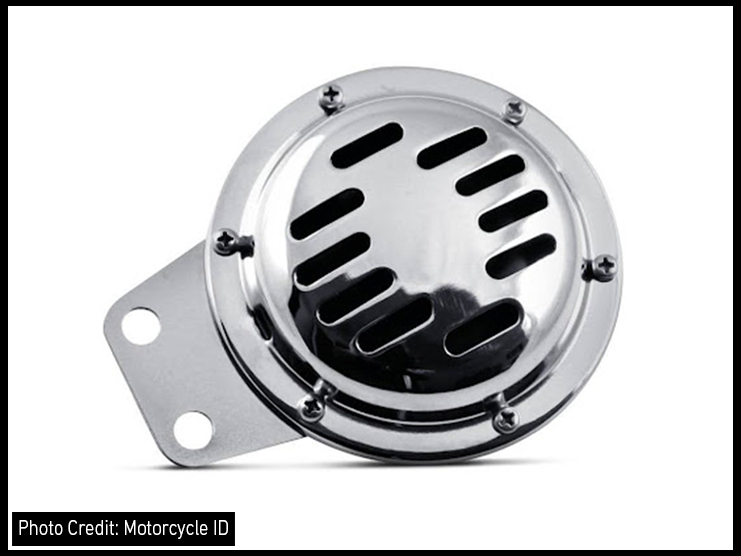
Leave a comment
All comments are moderated before being published.
This site is protected by reCAPTCHA and the Google Privacy Policy and Terms of Service apply.